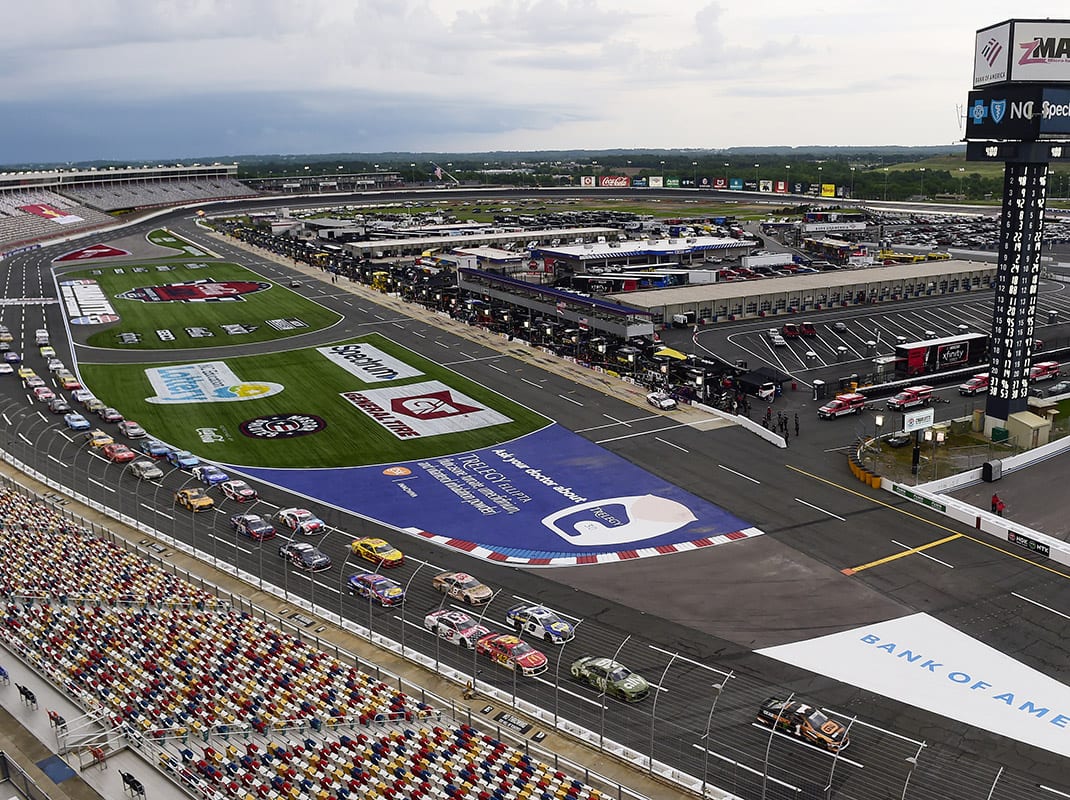The COVID-19 pandemic has been NASCAR’s biggest challenge since the sanctioning body was formed on Feb. 21, 1948.
However, NASCAR patriarch and founder Bill France, as well as the second and third generations of the France family, have faced many other challenges during seven decades of sanctioning stock car races.
Here is a brief look at some of NASCAR’s challenges through the years.
Five months into its first season, NASCAR suffered its first fatalities in separate incidents during modified races in Columbus, Ga., and Greensboro, N.C. For a time, those tragic events threatened to put NASCAR out of business.
On July 25, 1948, Red Byron, who won the NASCAR modified title in 1948 and became NASCAR’s first Cup Series (strictly stock) champion in 1949, was leading a 40-lap event at Columbus Speedway with an estimated 3,000 fans in attendance.
As Byron’s 1939 Ford came off of turn four with two laps remaining, the right-front tire exploded, sending the car into the crowd. Tall fence posts were sent airborne by the crash and many fans were badly injured.
“I remember it very clearly,” said Charles Jenkins in an article on the GeorgiaRacingHistory.com website. “As Red came flying into the turn, you could hear the engine breathe briefly. At that moment, I recall his right-front tire exploding, the one where in the curves most of the car’s weight is pressed. I watched him try everything he could to spin the car and avoid the crowd gathered at the fence. Apparently his one final gasp of hope was to gas it, pulling left at the wheel, apparently hoping to power spin it in harm’s way of the other racers — anything other than ramming into a pack of spectators. Regardless, the car kept nudging that bank and finally climbed it and hit.”

Sixteen people were injured and 7-year-old Roy Brannon, who had been sitting on the hood of his father’s car, died from severe head injuries the next day.
Also on July 25, 1948, in Greensboro, N.C., Bill “Slick” Davis flipped his 1937 Chevrolet several times and died from severe head injuries suffered when he was ejected from the car.
NASCAR faced negative headlines of death and injury in two prominent southern newspapers. Byron carried the guilt of the crash for the rest of his life, even though it was deemed “unavoidable by mechanical error that made his car unmanageable.”
Another hurdle for NASCAR came at the new Talladega (Ala.) Superspeedway (then Alabama Int’l Motor Speedway) during the weekend of Sept. 14, 1969. That day, 30 of NASCAR’s premier series drivers left the speedway in protest after tires provided for the inaugural Talladega 500 at the 2.66-mile track were deemed unsafe at high speeds.
France drove a Holman Moody-built Ford Torino at reduced speeds to prove the tires would hold up. Still, one of the tires blistered at speeds approaching 150 mph. After several days of heated discussions with the Professional Drivers Ass’n, headed by Richard Petty, the organization and NASCAR were at an impasse, forcing Petty to call for teams to load up and go home.
All but 14 drivers left, and France filled the field with drivers from NASCAR’s Grand American series. The race was won by Richard Brickhouse in a Ray Nichels-owned Dodge. Pete Hamilton won the next NASCAR race at Talladega on April 12, 1970, driving a Petty Enterprises Plymouth.
“The way it worked out was the greatest thing that could have happened to Talladega,” Petty said in the American Racing Classics book series. “They (NASCAR) got more publicity off that than they would have ever, ever gotten if it hadn’t happened. Talladega wasn’t on the map. That put them on the map. If everybody had raced, somebody won and nothing happened, it would have been just another race. The way it worked out, they got six or eight months of publicity all over the country.”
Click below to keep reading.
